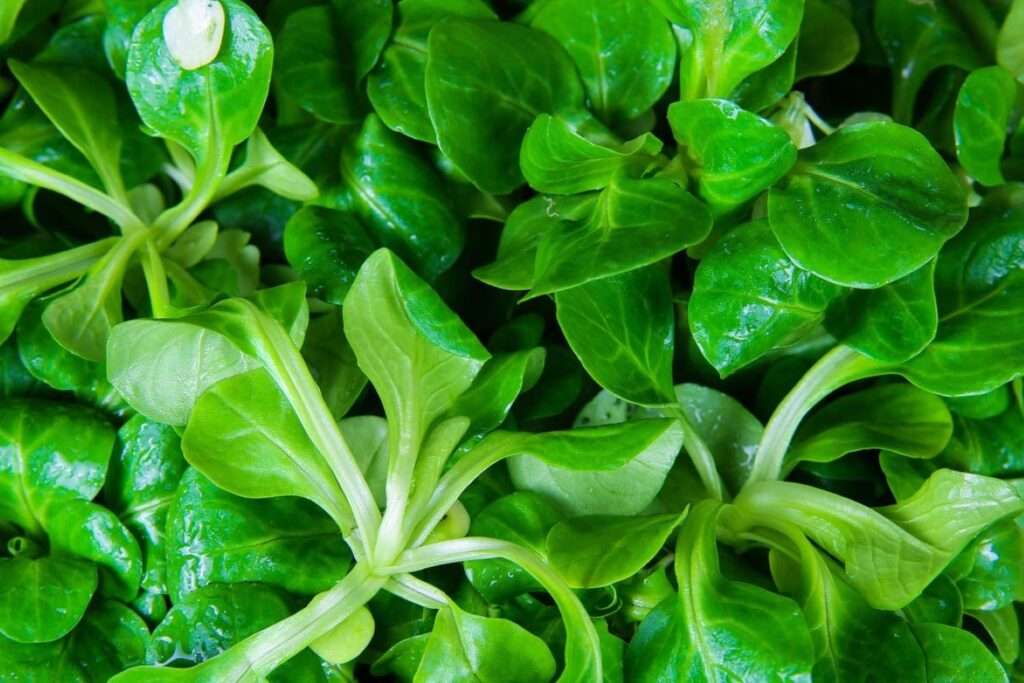
Description
Valerianella locusta is a tiny, herbaceous, annual blooming plant in the honeysuckle family Caprifoliaceae. It is also known by the names mâche or mache, common corn salad, or lamb’s lettuce. The plant has numerous long ascending branches and ranges in height from 15 to 45 cm. Six pairs of oblong-linear, alternating compound leaves, each measuring 15 mm in length and terminating in a spine, make up the compound leaves.
Habitat
It is consumed as a leafy vegetable in its native regions of Europe, Western Asia, and North Africa.
Uses
Beta-carotene, an antioxidant that the body turns into vitamin A, is abundant in lamb’s lettuce. This vitamin is important for healthy growth, immune system function, iron metabolism, vision, and skin health.

Varieties
Dutch Broad Leaved, French, Vit, and D’Etampes are popular varieties.
Plant Care
- Soil
For optimal growth, lamb’s lettuce requires pH levels between 6.0 and 7.0 and rich, well-drained soils that are high in organic matter. Use a soil test to determine the demand for fertilizer prior to planting, and then heed the advice provided in the test report. Mix fertilizer into the top six inches of soil if it is necessary to apply it. If you use compost for fertilization, cover the fertilized garden area with no more than one inch of well-composted organic matter.
- Water
Give lamb’s lettuce 1 to 2 inches of water per week. Temperature and soil type both affect how much water is needed. Try using drip irrigation if you can. Mulch surrounding the plant aids in weed prevention and soil moisture conservation. Variations in moisture lead to tougher leaves, slower leaf development, and more off-putting flavors.
- Mulches and Row Covers
In the spring and autumn, use cloth covers to shield transplants and seedlings from frost. During the summer, organic mulches help cool the soil and lessen water stress. Straw, shredded newspaper, and grass clippings are examples of organic mulches that aid in weed control.
- Fertilization
Four weeks after transplanting or during thinning, use ¼ cup of nitrogen-based fertilizer (21–0–0) per 10-foot row to promote rapid growth of the plants. Irrigate the fertilizer into the soil by placing it to the side of the plants.
Table





